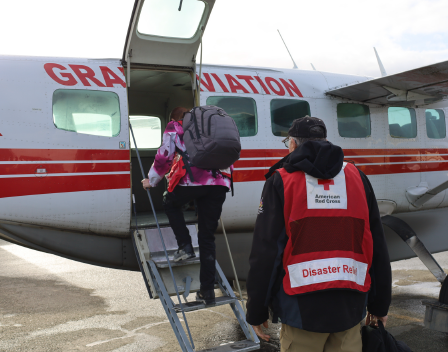American Red Cross’s Domestic Approach to Anticipatory Action

The American Red Cross has established robust protocols for forecasting, financing, and implementing early actions in anticipation of potential disasters. The Disaster Cycle Services (DCS) branch of the National Society has comprehensive mechanisms and labels specific to the US context, but the core of its programming has an anticipatory action framework.
DCS forecasting relies on formal and informal relationships with weather and federal agencies to obtain reliable data, which is then used by National Headquarters (NHQ) to build annual prediction models interpreted through expertise. Planning and implementation follow heavily proceduralized and time-bound processes once an incoming event is identified. Financing comes from annual budgeting for Disaster Response Operations (DROs), with core funding used for readiness activities. Readiness activities per geographic area involve consistent goal setting for workforce and stocks/supplies and are well connected to early action protocols. Weeks out, readiness actions are tailored to the specific disaster type according to the risk profile of the geographic area. (Grant funding also supports Community Adaptation Programs for disaster risk reduction in select communities, but this is a newer initiative and does not directly provide funds for anticipation).
Days before a predicted event, pre-set actions begin as early as 168 hours out for hurricanes, with active readiness coordination of personnel, supplies, and shelters occurring at 120 hours out. Shorter timelines are used for other hazards, though these standards are less fixed as other hazards are less predictable than hurricanes. The evidence implies that, generally, the American Red Cross does not focus on anticipatory service delivery and does not conduct any pre-disaster distributions of goods or resources. Instead, they focus primarily on team readiness and pre-positioning. This standardized approach to forecasting, funding, and early preparedness allows the organization to systematically mobilize ahead of disasters and initiate their response phase quickly and effectively. There is more work to be done in exploring their implementation actions in the anticipation window.
